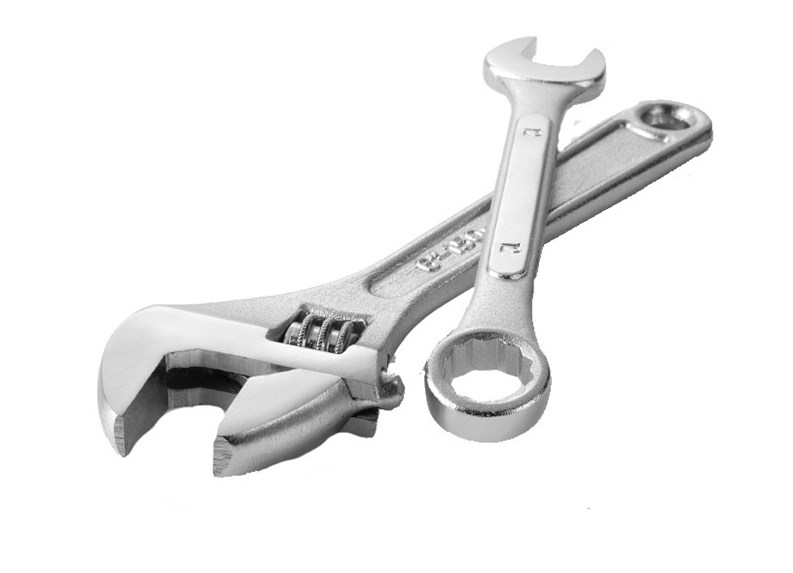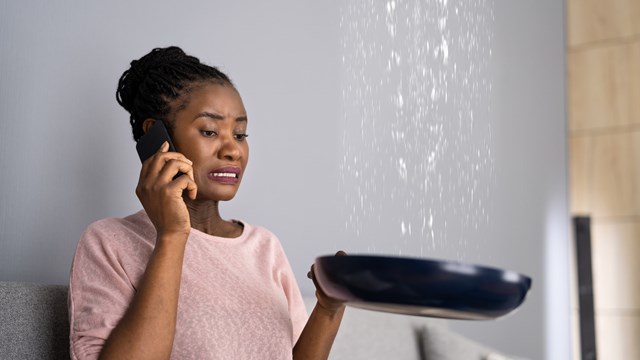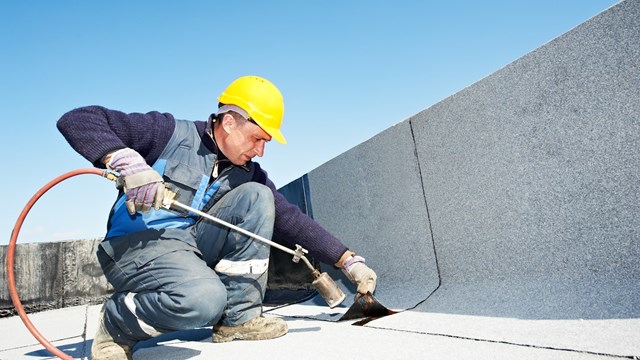In 1999, after her four-year-old son began coughing up blood and her husband started suffering respiratory complaints and memory loss, Melinda Ballard and her husband Ron Allison were told by their family physician to evacuate their Austin, Texas home immediately. They left in fear, with just the clothes on their backs. The force that drove the Allison-Ballard family from their home was not a malicious landlord or a tragic fire, but rather a toxic mold called stachybotrys that had infiltrated the walls of the house and taken root, spreading dangerous spores and triggering a host of health problems for the family.
The couple later sued their insurer, Fire Insurance Exchange, a Farmers subsidiary, for failing to cover the necessary repairs for a water leak in their home that fostered a dank, humid, mold-friendly environment. The family was awarded $32 million dollars, and the suit set a precedent as the first case in which a homeowner was awarded damages in a mold case against an insurance company.
With over 100,000 types of indoor and outdoor mold growing across the world, preventing incursion into your building by the 50 to 100 varieties deemed hazardous by the U.S. Environmental Protection Agency (EPA) might seem easy, think again. According to the New York City Department of Health's (NYCDOH) division of Environmental & Occupational Disease Epidemiology, wet or damp material - whether it's drywall, caulking, grout, wood, or carpet - can become moldy, and when the moldy material is damaged or disturbed, spores are released into the air. If those spores are inhaled or ingested by a human, trouble is not far behind. This puts the nuisance of a dank basement or leaky roof into a whole new perspective.
Technically speaking, molds produce chemicals called mycotoxins, which can cause illness in people who are particularly sensitive to them or who are exposed to them in large amounts or over a long period of time. The most common symptoms of mycotoxin exposure are runny nose, eye irritation, cough, congestion, and aggravation of asthma. Stachybotrys chartarum - the mold found in the Allison-Ballard home - has been the subject of many building-related illness investigations. In 1994, the U.S. Centers for Disease Control (CDC) reported the deaths of several infants in Cleveland in a case that involved Stachybotrys. The alleged cause of the deaths was idiopathic pulmonary hemorrhage (IPH), possibly - though not decisively - brought on by exposure to Stachybotrys mycotoxin exposure.
On May 7, 1993, NYCDOH, along with the New York City Human Resources Administration (HRA), and the Mt. Sinai Occupational Health Clinic convened an expert panel to develop policies for medical and environmental evaluation and intervention of Stachybotrys contamination in residential dwellings. The panel outlined the health impact of mold exposure and drafted guidelines for removal procedures in response to cases like those of the Allison-Ballards and several similar instances in New York City buildings in the early 90s.
Mold is typically found in buildings affected by water damage. "Mold needs the proper conditions to grow," says David Harvey, vice president of technical development at Trade Winds Environmental Restoration in Bay Shore, Long Island. "If there has been a driving rain, flood, or a breach in the building and a leak over time, you'll have moisture there."
"By the time the mold is visible to the naked eye, it's eaten through the walls," says Steve Wolfson, president of ECS Environmental Cleaning Systems in Valley Stream, New York. Wolfson explains that mold is a consequence of negligence, not a bad-luck, seasonal problem. "It doesn't matter [what season it is]," says Wolfson. "Water damage that isn't corrected causes mold. You can also have a problem inside the duct work or heating system and you can smell the mold or mildew when the heat is running."
According to Harvey, controlling mold is as simple as controlling moisture. "Make sure the repairs in the building are done and the building's envelope is sound. Rapid drying of water problems within 24 to 48 hours is very important." The EPA offers these tips for controlling mold: keep heating, ventilation, and air conditioning (HVAC) drip pans clean, flowing properly, and unobstructed; maintain low indoor humidity, below 60 percent relative humidity (RH), ideally 30 to 50 percent if possible; don't let foundations stay wet; provide drainage and see to it that the ground outside slopes away from the foundation of your building.
If it's too late to prevent mildew and mold from infiltrating your building, it's imperative that your board and building staff take immediate steps to eradicate the problem. No matter what type of mold has made its home in your home, your safety depends on containing and remediating the growth.
If a mold colony is more than two square feet in diameter, or if it's gotten into the carpet or drywall, every inch of affected building material must be thoroughly cleaned - or removed and replaced - before permanent repairs are made. Simply sponging off or covering up a mold problem once it has a foothold in masonry or flooring will only exacerbate the problem as the mold continues to grow unabated.
According to the New York State Department of Health guidelines, building maintenance staff can remediate small and mid-sized mold growth without involving professionals. Growth must be removed within 24 to 48 hours of discovery. Non-porous materials - like metals, glass, and hard plastics - and semi-porous materials - like wood and concrete - can be washed with a detergent solution containing bleach, and need not be torn out or replaced. Porous materials, however - like ceiling tiles, insulation batting, and wallboard - must be removed and discarded. Any building staff working on even a small mold repair project must use respiratory protection, gloves, and eye protection.
Tempting as it might be to have your building super or maintenance staff try to scrub away a more serious mold situation, remediation of large and extensive isolated areas of mold growth should be done by a health and safety professional with experience performing microbial investigations - particularly if heating, ventilating, air conditioning (HVAC) systems or large occupied spaces are involved.
Professional mold remediators are skilled in finding hidden mold contamination and may use several testing methods. A professional will physically inspect the area to determine the type of mold involved. To obtain a small sample, a sterile swab or piece of adhesive tape may be used to wipe the contaminated area. The sample is then transferred to a culture plate and tested more thoroughly. Mold professionals can use controlled air tests to determine the amount of spores floating around a given space, moisture meters to identify the extent of water damage inside a wall, and fiber optics to look inside walls and ceilings to find patches of contamination that their physical inspection might have missed.
Bulk or surface samples of mold growths may need to be collected to identify specific fungal contaminants as part of a medical evaluation if occupants are experiencing symptoms possibly related to fungal exposure. According to NYC guidelines, bulk samples are usually collected from visibly moldy surfaces by scraping or cutting materials with a clean tool into a clean plastic bag.
Other sampling methods may also be used. "We even have mold sniffing dogs that aid us in locating mold in hidden areas," says Harvey. "The first dog sniffs out a contaminated area, and a second dog is sent in for confirmation. The company then inspects the area using fiber-optic cameras."
Once the extent and severity of contamination is determined, building owners and management must immediately notify residents in the affected area of the presence of mold and include a description of the prescribed remediation strategy.
Companies that specialize in mold remediation may guarantee the work that they do, but they cannot guarantee the mold is gone forever. "There might be another leak in the wall, or a humidity problem, even though we've taken care of the first problem," says Wolfson. "Of course mold can return."
Although the environmental and health impact of mold has been an issue for a long time, some well-publicized lawsuits have fueled recent media attention. "There has been a wave of litigation that is sweeping the country," said Ken Lapatine, principal shareholder at Manhattan law firm Greenberg Traurig LLP. "The number of claims against insurance companies regarding mold has skyrocketed. The people bringing these lawsuits are trying to hold someone responsible for the presence of the mold, whether it's the building owners, managers, construction industry or design professionals."
According to Lapatine, 500 mold cases were filed last year in New York State alone. "New York isn't the environment that you would think of [having a] mold problem," says Lapatine. "Usually you think of places that have high humidity."
But mold is a hot litigation button nonetheless. As to manager or contractor's culpability in mold-related suits, Lapatine says, "If mold is found within a building, the liability would depend on how the mold got into the building and what was done."
For example, Lapatine points out that in one case, mold was alleged to be present in a courthouse, but it was the construction of the courthouse that caused the problem, not the way it was managed or maintained. In another case, a building owner was responsible for mold contamination because he wasn't diligent in taking care of a water leak. In yet another case, a commercial tenant was held responsible for maintaining the HVAC system for the office space it leased. Says Lapatine, "The tenant didn't maintain it, and it flooded and leaked," causing a building-wide mold contamination problem and a huge legal snarl for the negligent tenant.
While there have been cases of homeowners actually burning down their own homes to get rid of mold, the issue of mold is also a growing problem for insurance companies. In response to the growing number of lawsuits, several insurance companies have eliminated mold coverage from their policies, claiming that mold-causing water damage is beyond their purview.
"What will happen is when science develops further and the health problems are exactly determined, it may help the litigation process," said Scott Greenspan, associate at Greenberg Traurig. In the meantime, preventing mold contamination and treating it immediately if it surfaces is vital to the safety and well being of your building's residents. By handling the growth promptly, you can avoid a more expensive, more complicated process - as well as preventing possible legal troubles.










2 Comments
Leave a Comment